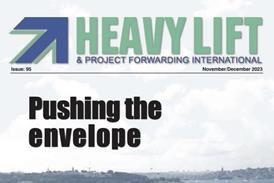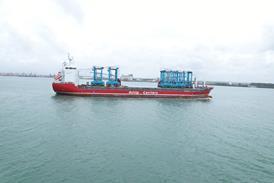August 15 - The International Monetary Fund (IMF) has marked down its global growth projection for 2014 from 3.7 percent in April to 3.4 percent in July.
The IMF's says that this reflects both the weak first quarter, particularly in the USA, and a less optimistic outlook for several emerging markets. However, with somewhat stronger growth expected in some advanced economies next year, the IMF's global growth projection for 2015 remains at 4 percent.
Global growth is expected to rebound from the second quarter of 2014, said the IMF, as some drivers underlying first quarter weakness, such as the inventory correction in the USA, should only have temporary effects, and others should be offset by policies, including in China.
However the IMF notes that downside risks remain a concern. Increased geopolitical risks could lead sharply to higher oil prices, for example.
Global growth looks like it could be weaker for longer, given the lack of robust momentum in advanced economies, despite very low interest rates and the easing of other brakes to recovery.
The IMF stressed that in many advanced and emerging market economies, structural reforms are urgently needed to close infrastructure gaps, strengthen productivity and lift potential growth.
Although there were upside surprises to activity - in Japan, and also in Germany, Spain, and the UK - four negative surprises dominated.
In the USA, the inventory overhang at the end of 2013 turned out to be larger than expected, leading to a stronger correction. A harsh winter further dampened demand, exports declined sharply after a strong fourth quarter, and output contracted in the first quarter of 2014.
In China, domestic demand moderated more than expected, reflecting the authorities' effort to rein in credit growth and a correction to real estate activity.
Activity in Russia decelerated sharply as geopolitical tensions further weakened demand. In other emerging market economies, weaker-than-projected growth resulted both from weaker external demand, notably from the USA and China, and, in a number of cases, softer domestic demand with weaker investment growth.
Financial conditions have eased since the April 2014 World Economic Outlook (WEO) was released. Long-term interest rates in advanced economies have declined further, in part reflecting expectations of a lower neutral policy rate over the medium term; indicators of expected price volatility have declined as well, and equity prices have strengthened.
Leading indicators point to the global recovery regaining strength in the second quarter of 2014. The IMF said that this is consistent with the view that the unexpected weakness in the first quarter was in large part temporary, because the impact of factors such as harsh winter weather and inventory correction will disappear and policies have already responded to weaker growth, including in China.
Nevertheless, some of the demand weakness in the first quarter appears to be more persistent, especially in investment globally, and is expected to result in lower global growth in 2014 compared with that predicted in the April 2014 WEO.
Turning to the major advanced economies, a growth rebound is underway in the USA as temporary factors wane. But with a more muted recovery in investment, the rebound is expected to provide only a partial offset to the weak first quarter outcome in terms of annual growth. Growth is now projected at 1.7 percent for 2014, rising to 3 percent in 2015.
Growth in the euro area is expected to strengthen to 1.1 percent in 2014 and 1.5 percent in 2015 but to remain uneven across the region, reflecting continued financial fragmentation, impaired private and public sector balance sheets, and high unemployment in some economies.
In Japan, with a stronger than expected performance in the first quarter, growth in 2014 is now projected to be higher at 1.6 percent, decelerating to 1.1 percent in 2015, mostly due to the planned unwinding of fiscal stimulus.















